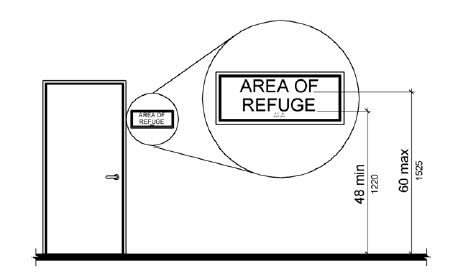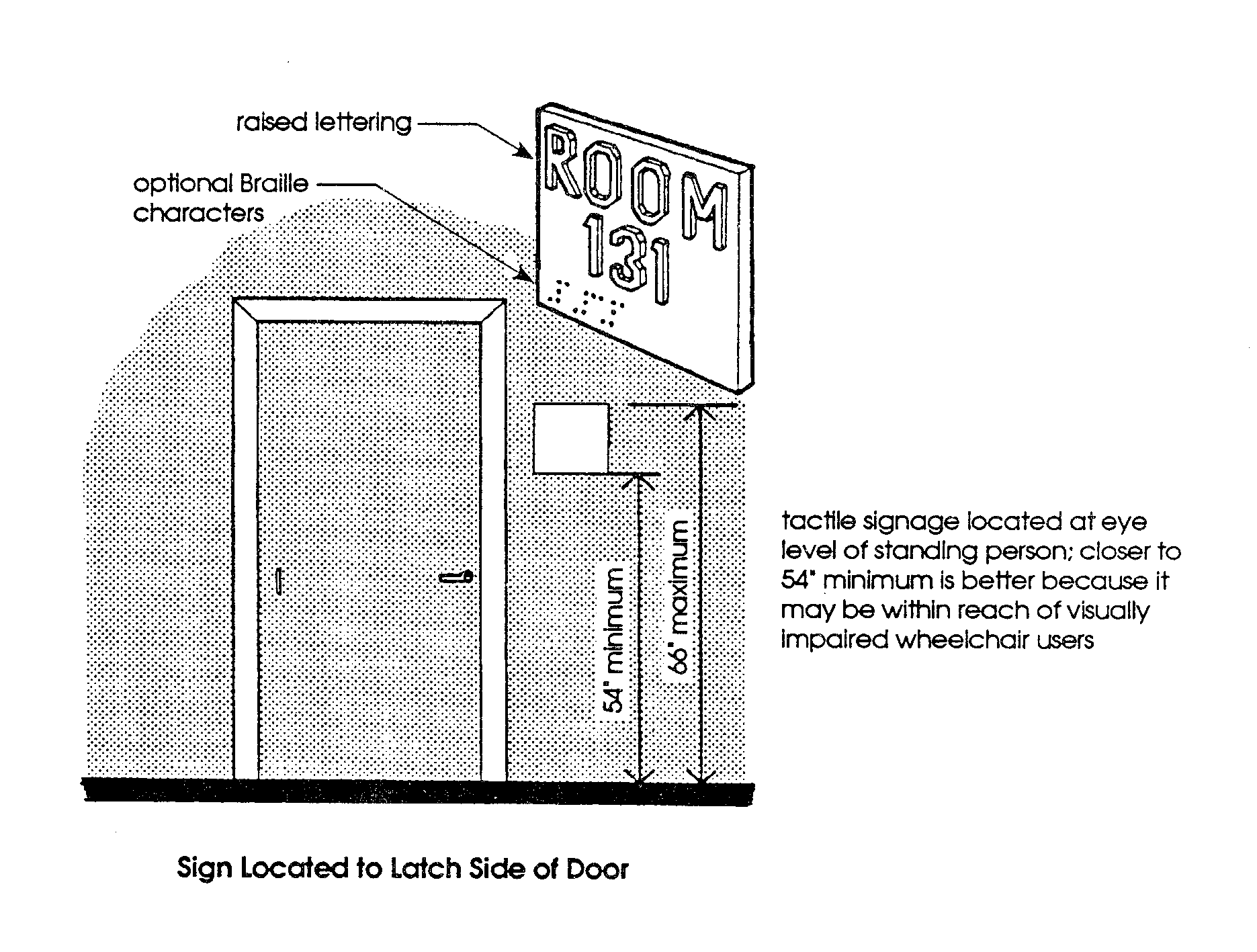Question: I’m so embarrassed! I thought I knew every 2010 Americans with Disabilities Act (ADA) change, but changes to design guidelines for interior sign height caught me off guard. I had to correct someone on my punch list review when I realized the error. Please address this so your other readers don’t make the same mistake. — Aubrey, Miss.
Answer: I made the same mistake! As closely as I studied the updates, I realized the change only when questioning a sign’s height. Here’s the scoop.
| 1994 Accessibility Guidelines | 2010 Accessibility Guidelines |
| 4.30.6 Mounting Location and Height Where permanent identification is provided for rooms and spaces:
| 703.4.1 Height Above Finish Floor or Ground Tactile characters on signs shall be located:
Click here for other details regarding signage. |
| This graphic is from the Uniform Federal Accessibility Standards (USFAS) Retrofit Manual. |


|
The U.S. Access Board recently posted an animation that explains these and other design considerations. Click here for more information.



